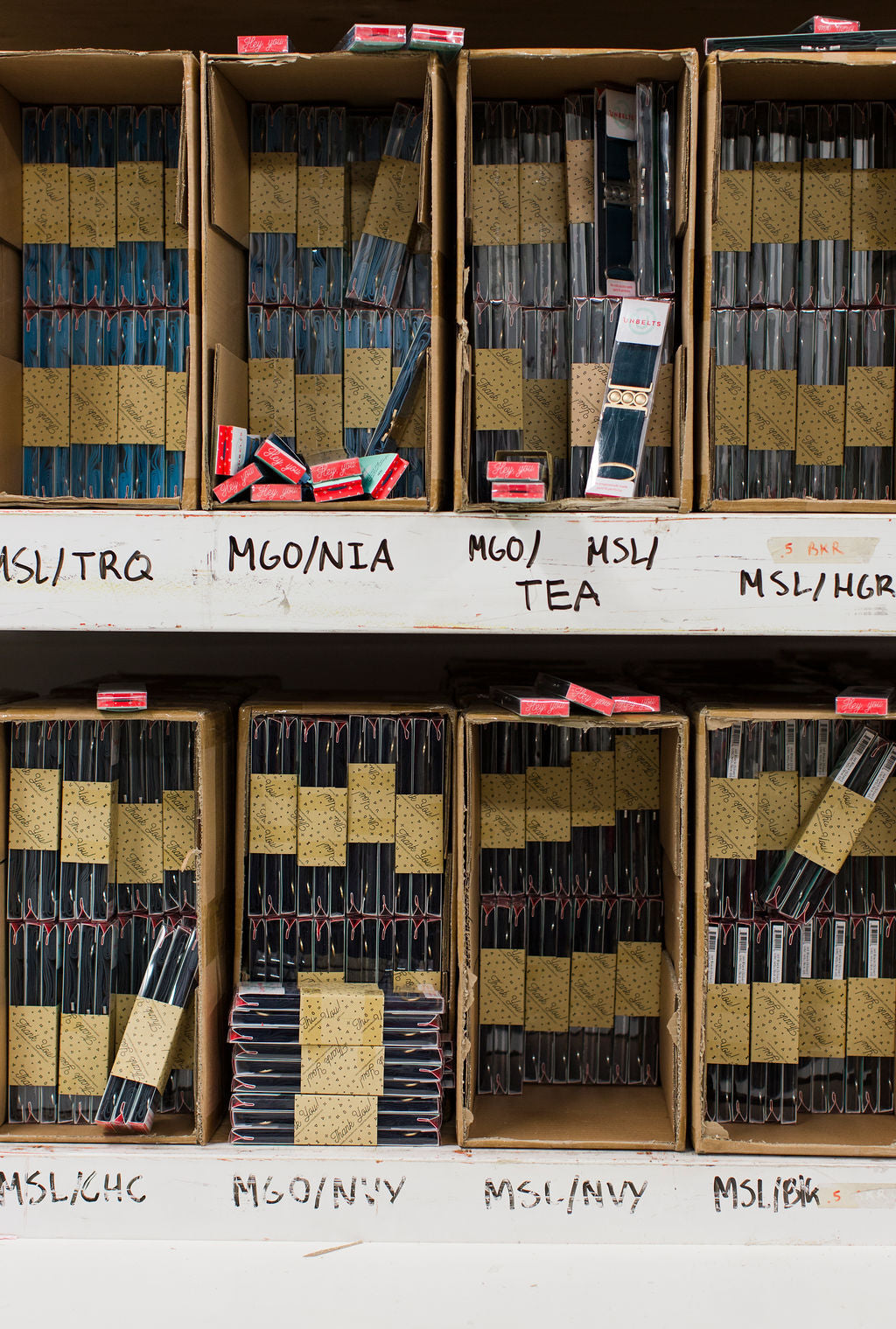
Honey, I Got You A Supply Chain Delay For Christmas
Share
If you’d never thought about global supply chains before COVID-19, you’re not alone. They’re designed to be invisible: most companies want their customers’ attention on product features and benefits, not the deeply unsexy raw materials and logistics infrastructure that gets those products into your home.
Since the Great Toilet Paper Shortage of March 2020, though - we’ve all been confronted with the reality that behind every single product is a deep network of suppliers, and that it only takes weakness in one link of that supply chain for the whole system to unravel.
Our own supply chain is no less vulnerable.
Yes, we’re directly connected to our sewing teams and to our component suppliers. This open line of communication helped us pivot quickly to cloth masks and to clear a lot of the 2020 manufacturing hurdles that other businesses faced (you can read my conversation with our Changping sewing factory owner, Ms. Ou, here).
And also yes, we’re facing supply chain surprises that we hadn’t imagined were possible.
They’re affecting both sewing studios - Ms. Ou’s in Changping, China, and ours here in Edmonton, Canada - and I want to pull the curtain back here on what “disruptions” actually mean here at Unbelts, and for so many of our fellow businesses, both locally and globally. You’ll be hearing a lot from me and our team over the coming weeks, but here are my Big Three Surprises so far:
1. What do you mean, our holiday belt colours won’t be ready until April 2022?
Did you know that our yarn needs to be custom-dyed before it goes to the knitting factory? It’s usually such a quick stop at the dye house - 24 to 36 hours - that besides choosing a colour, I don’t even factor this step into our production lead times.
UNTIL OCTOBER 2021.
Because rolling power blackouts in China meant that our dye house, a family-run operation, had to cut down production to four days per week. (What’s behind the blackouts? Lots of things, including reducing carbon emissions - yay! - and political tension with Australia.)
And then to two days per week.
All of a sudden, their processing time increased from a day or two to three weeks. Okay, I thought. As long as knitting and sewing and packaging and shipping are running on time… we should be okay.
2. We… can only sew at half capacity?
And then the blackouts hit Ms. Ou’s sewing studio, too. Our sewing lead time doubled, and then we learned the dye house lead time doubled again, too, to almost six weeks.
Our solution: lean on in-stock colours and black belts for the holidays. Our yarn supplier could supply us with pre-dyed black yarn that they already had in their storeroom, allowing us to knit that into Classic elastic. We wiped the slate clean of the fun holiday colours we had planned for you (goodbye, Snow Leopard) and are looking forward to a very colourful Summer 2022.
3. Hey, do you mind if we quadruple your shipping prices?
Shipping prices since the beginning of COVID have crept up… and up… and up… and service delays and interruptions (i.e. containers being stuck at ports) have increased right alongside them. We haven’t had any significant shipping delays, but the cost to ship a single belt - or a single belt’s components - has more than quadrupled since February 2019.
Where we’re at
We’re doing our utmost to make sure you’ve got what you want and need from us for the holidays. We’re hustling to increase our Edmonton sewing capacity so any Classic belt shortages can be absorbed by our Intrepid sales (Ms. Ou’s team makes Classics, and we make Intrepids), and are navigating how to do so with limited studio space and strict adherence to social distancing guidelines.
We’re seeing businesses all around us experience supply chain difficulties in equally surprising ways. They may not be tripped up by dye houses, but they’re short of the bottles they use for packaging, or the clasps they use for their jewelry won’t be arriving until February.
Some bottlenecks can be alleviated locally, but not all - and the supply chain behind most of us is composed of smaller businesses than you’d think. Shop early if you’ve got your eye on something. Shop from local vendors, and realize we all depend on a global economy. Send me your questions (and if you’re a business owner, email me if there’s a way we can support each other this season). I’m looking forward to sharing more of this journey with you all.
